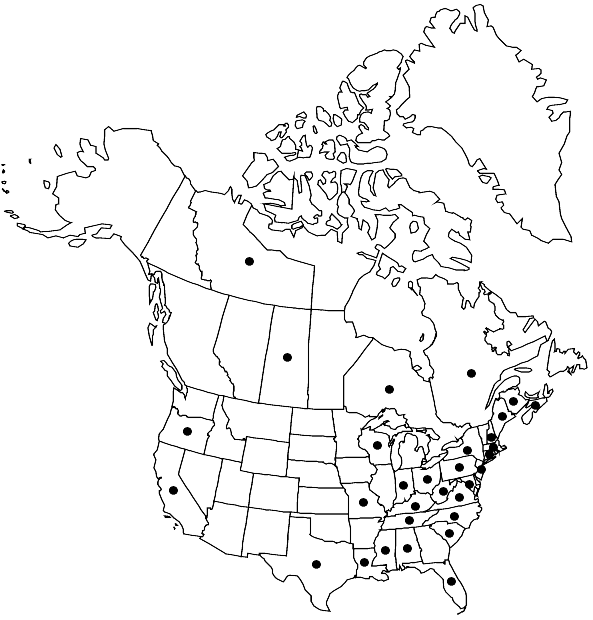Ephemerum serratum
Flora 20: 285. 1837,.
Plants less than 2 mm, gregarious in persistent matted protonemata. Leaves linear-lanceolate to ovatelanceolate, sometimes narrowed from distinct shoulders, 1–2.4 × 0.17–0.3 mm; margins usually coarsely and irregularly serrate distal to the proximal third, often with spines, but varying to scarcely serrate; apex tapering gradually to a sharply pointed acumen, absent papillae; costa usually absent, but sometimes suggested by a few thick-walled cells or an obscure double layer of undifferentiated cells, smooth; areolation lax proximally and somewhat firm distally; median laminal cells in vertical rows, smooth; distal laminal cells smooth. Capsule with columella resorbed before meiosis; stomates only at the base. Spores spherical or reniform, 55–106 × 27–75 µm.
Phenology: Capsules mature year around, mostly in autumn.
Habitat: Basic habitats more often than other species of the family, meadows, pastures, drying and dried soil
Elevation: low to moderate elevations (5-1200 m)
Distribution

N.B., N.W.T., N.S., Ont., Que., Sask., Ala., Calif., Conn., Fla., Ind., Ky., La., Maine, Md., Mass., Miss., Mo., N.H., N.J., N.Y., N.C., Ohio, Oreg., Pa., S.C., Tenn., Tex., Va., W.Va., Wis., South America (Brazil), Europe (Sardinia), Asia (China), Africa (South Africa), Pacific Islands (New Zealand)
Discussion
The leaf margins in Ephemerum serratum vary markedly, from barely serrate to long spinose. In general, plants from eastern North America tend to be more strongly serrate than plants from California and Oregon, although barely serrate plants from the east as well as distinctly serrate plants from the west have been seen. Mature capsules frequently persist with only the remnants of leaves remaining, the distal portions of the leaves apparently eroded away. Rarely, thick-walled, elongate, brown structures occur on the protonemata and they may serve as diaspores.
Selected References
None.